Text
Gender fluidity: The blurred line between male and females
New media = New norms
Lauren Heath
620112007
Gender does not simply mean male or female anymore, it can be defined as the social differentiation between maleness and femaleness or masculinity and femininity (Evans, 1999). Gender roles in society are how we’re expected to act, speak, dress, groom, and conduct ourselves based on our assigned sex. With the aid of mainstream media it is evident that gender roles have been reversed.
What exactly does this mean?
In modern times it is more acceptable for men to portray feminine behaviours and females masculine behaviours. The media makes it easy for both sexes to “live in their own truth” without being chastised or frowned upon. This can be seen on platforms such as youtube, Instagram as well as on the television, where men are portraying what is seen as feminine qualities. A well-known youtube star known as Bretman Rock wears, does and sells makeup, appears androgynous as it relates to his attitude, his sense of style and partaking in exotic dancing.
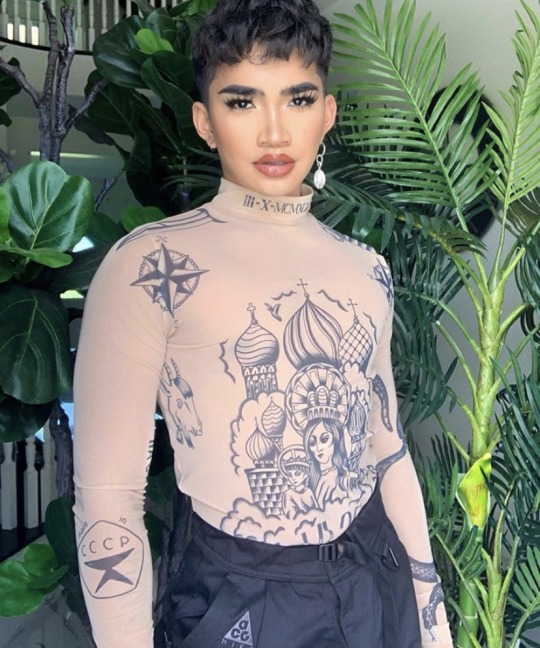

Another example is popular Jamaican comedian known as Quite Perry. He is known for the female persona he uses by the name of Patrica who is a professional “mantaker”. Alongside with this, he is also a social media influencer and a youtuber. One could say he displays feminine behaviours in many of his youtube videos using phrases like “Dat nuh bad” and “UP UP!” etc
https://www.instagram.com/p/ByY-FVlBrzD/?igshid=1ny8nd746vugk
https://www.instagram.com/p/BywJlLAFM7H/?igshid=s8vpk54b75ly
Consequently, with this gender stereotype comes into play. Gender stereotype is the preconceived ideas whereby females and males are arbitrarily assigned characteristics and roles determined and limited by their gender. Typically when persons display feminine or masculine characteristics people make assumptions about their sexual orientation. When a male publicly displays feminine qualities the main assumption is that he is gay. For example prince marni

https://youtu.be/oYND9omR0LQ
When females openly display masculine quality she is painted to be a lesbian. For example Koffee

However, with that being said mainstream media has opened a lot of doors for the LGBTQ community. Persons apart of the community now have more rights as they are no longer seen as taboo. They are now able to get married in different countries and are eligible to adopt children and have surrogates. They also have an entire month dedicated to the celebration of the obstacles persons apart of the community had to face such as losing members due to hate crimes and HIV/AIDS. Additionally, men that are openly gay are able to engage in what was traditionally seen as feminine career choices. It is evident on youtube and instagram where a lot of males are now venturing in makeup, hair and nails, whether it’s doing tutorials, creating their own products and becoming makeup artists. As it relates to career choices, males and transgender are now able to pursue being a drag queen as an actual profession with the help of popular television program by the name of Rupaul’s Drag Race. Queens enter the competition in hopes to win and in turn gain a following on different social media platforms which opens multiple doors. Many drag queens from the show have modeled for a lot of big companies and have been featured in many music videos.
https://youtu.be/Ez0-FX23OoQ
https://youtu.be/KnFR07DWIVQ
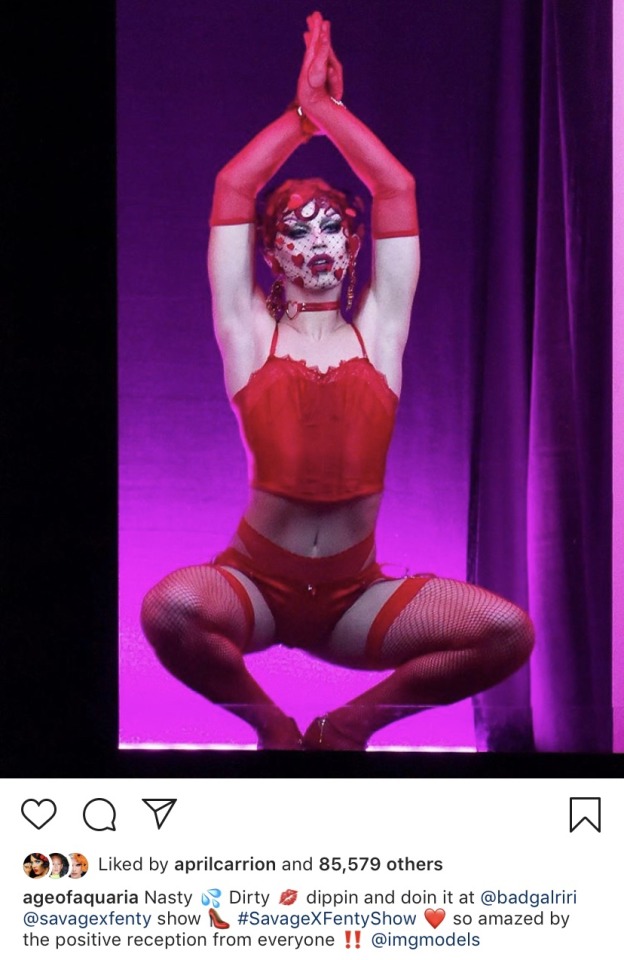
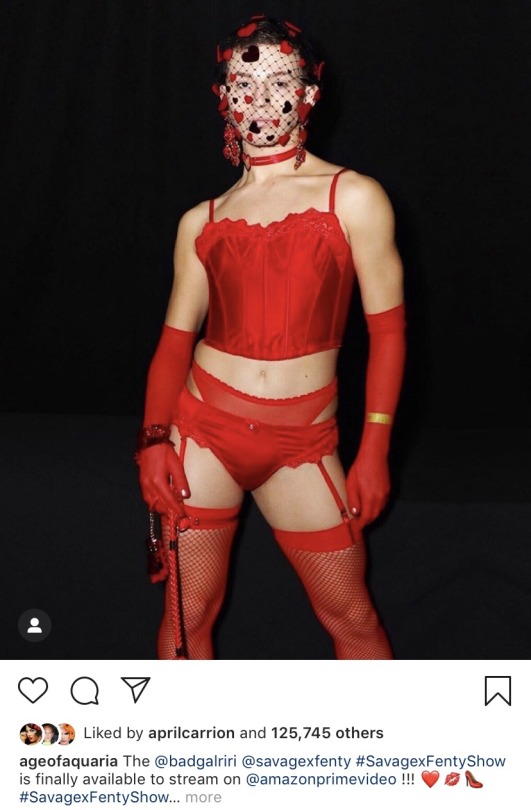
Shown above is a drag queen modeling for Savage by Fenty which is Rihanna’s brand.
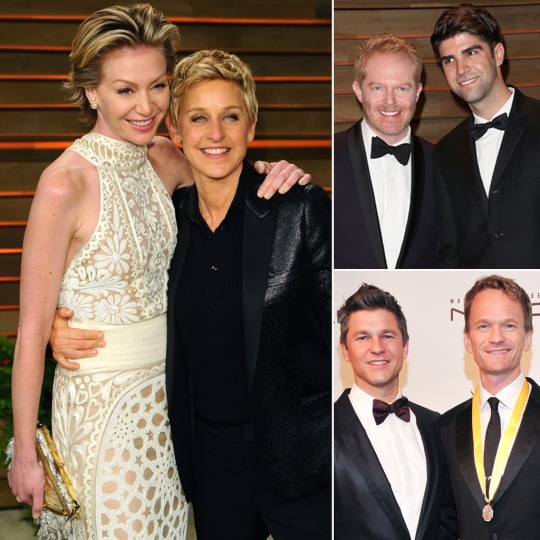
The photo shown above includes married celebrities that are apart of the LGBTQ community.
It can also be said that mainstream media is paving the way for upcoming female artists to earn a spot in the Dancehall and Reggae music industry which is dominated by males. Female artists such as: Stalk Ashley, Jada Kingdon, Shenseea, Koffee and Sevana uses social media platforms to make a significant impact in the male dominated industry. By using these platforms these artists eventually gain a following which in turn promotes their artistic products, creating many international opportunities such as BBC Radio 1Xtra appearance.
https://youtu.be/4ld79_2whFE Koffee’s appearance on BBC Radio 1Xtra
https://youtu.be/r73MT8eSvpU Jada Kingdom’s appearance on BBC Radio 1Xtra
https://youtu.be/vBgilyeXSfc Stalk Ashley’s appearance on BBC Radio 1Xtra
Reference
https://eige.europa.eu/thesaurus/terms/1222
https://www.plannedparenthood.org/learn/sexual-orientation-gender/gender-gender-identity/what-are-gender-roles-and-stereotypes
https://www.cam.ac.uk/research/discussion/when-gender-roles-are-reversed-equality-and-intimacy-at-home-and-in-the-workplace
0 notes
Text
I am more- Shamique Peterkin 620109532
The meanings and values we associate with femininity and masculinity or being womanly or manly is referred to as Gender (Whose Perspective? 2011). Gender has been one term that has sparked many controversies in our society over time. There are certain roles, behaviours or expectations that we associate with being a girl or a boy. Each gender is expected to behave a certain way, think a certain way and view the world through certain lens. The media outlets have allowed for the continuation of reinforcing these required behaviours for each gender. The media stands as one of the largest and most influential agent of socialization for our children. There are certain stereotypes; a widely held but fixed and oversimplified image or idea of a person or thing (Oxford Dictionary 1800), that the media outlets continue to drill into the minds of its content consumers. These stereotypes tend to negatively impact the gender it is illustrating.
Our children from early as Primary School are being thought how they should act and what they should expect from the opposite gender. These textbooks tend to portray females in a stereotypical manner. We see when describing a female, she is always seen as emotional, easily manipulated and nurturing (UNESDOC 2007). In most of the textbooks in school we see females are always illustrated as the housekeepers and mothers, as though those are the only roles she can or is supposed to assume. These types of stereotypes are limiting our children’s’ minds and potential. We aren’t portraying our females a strong, independent and powerful women. In non-academic books the females rarely assume the position of lead character however when she does, she is illustrated as being family oriented, sexually promiscuous or cannot find a husband because she is an independent woman.
youtube
Sexual exploration of women especially on Television is very common. We tend to hyper sexualize our women and place their importance based on their physical appearance. They are portrayed as sexual objects to be gratified by men. It is an unrealistic expectation which allows our girls to have low self-esteem because they can’t achieve the clear skin, and hourglass figure that the media tells them they are supposed to have to be desired by a man. These portrayals of women create a fantasy that men believe everyday women are to live up to. The popular designer body is a clear representation of what the supposedly “perfect” figure bodies are displayed.
youtube
So, no matter what a woman achieves within her lifetime her appearance is the deciding factor on her worth. The term “sex sells” is one in which many advertisers use when they show women in provocative positions. In many advertisements our ladies are always half dressed or only the butts, breast and vaginal area are being highlighted.
youtube
youtube
These misrepresentations of our women have got to change. They are a form of keeping us in check and subtly reminding us what is expected of us. We need more books and movies that show our women as something other than a wife, mother or/and a housekeeper. Not only do these contents teaches our girls what they should aspire to be and look like but also it shows our boys what to expect from our girls. We do this and do not even realize we are also creating a unhealthy atmosphere for our boys cause they become sexually promiscuous and think their role is to sexually dominate a women and it is always what he wants and when he wants it. Which is why they become abusive to women cause what they expect is not always what is shown.
Reference:
Blumber, R. L. (2007). Gender bias in textbooks: a hidden obstacle on the road to gender equality in education . UNESDOC. Retrieved from https://unesdoc.unesco.org/ark:/48223/pf0000155509
Brooks, D. & Hébert, L. (2006). Gender, race, and media representation. In B. J. Dow & J. T. Wood The SAGE handbook of gender and communication (pp. 297-318). Thousand Oaks, CA: SAGE Publications, Inc. doi:10.4135/9781412976053.n16
Swift, J., & Gould, H. (2019). Not An Object: On Sexualization and Exploitation of Women and Girls. UNICEF USA. Retrieved from https://www.unicefusa.org/stories/not-object-sexualization-and-exploitation-women-and-girls/30366
WMW-Jamaica (2010) Whose Perspective: Gender Analysis of Media Content, Kingston, Jamaica
0 notes
Text
Gendered Alcohol
Gender is an inescapable, multifaceted aspect present within our modern society as humans. Gender roles are the ‘social definition’ of women and men. They vary among different societies and cultures, classes, ages and during different periods in history. It is constant and can be seen through all forms of media through things as timeless as alcohol. Alcohol consumption among humans is one of the oldest practices still done by humans today. The practice of “drinking” is something that transcends race, culture and sex. As society has evolved and through the media, alcoholic beverages are now highly differentiated by factors such as ingredients, manufacturers, cultures and even gender. Certain beverages now fall into categories such as “ a man’s drink” and “a woman’s drink” as opposed to just a recreational drug as it was used for in the past. Products such as wines made from fermented fruit are now being portrayed throughout culture and media as a more effeminate drink with labels such as “ Mommy’s little helper.” despite the fact that they were the main alcohol of choice for human kind men included for generations. Products such as beers, scotch and rum, usually had without any chasers or mixes are deemed the more masculine and “stronger” drinks.


What branding and marketing like this has done is created a sense of exclusion of certain types of alcohol’s across genders and creating a sense of stigmatization towards people who deviate from this established norm. E.g a man who drinks wines or mixed drinks is “soft” of a woman who drinks harder alcohols such as rum and whiskey is vulgar. All this accomplished is am unnecessary tension in a practice that is supposed to help ease tension.
Not only are the types of alcohols people partake in drinking heavily stereotyped, but how they consume it as well. Men who drink in small amounts are deemed “light weights” and it is expected for a man to drink more than a few glasses and still be able to function well. It is also usually socially accepted or at least socially “forgivable” for a man to become intoxicated when drinking in a social setting even to the point of amnesia like it is something to celebrate at times. Women on the other hand are seen as “uncouth” or “careless” if they do the same with far less social acceptance and forgiveness
Fortunately, we as a people are standing to portray that people and preferences are different and the way all of us should be drinking is in a responsible manner prioritizing safety in our enjoyment. Marketers have noticed that this divide and have found a way to both assist and capitalize in the removal of this stigmatization. The alcohol industry targeting women in their marketing efforts to boost lagging sales of men and the alcohol industry as a whole, especially with traditional “male” drinking through new rebranded products such as the “Jane Walker” line of whiskey from the traditional Johnnie Walker brand. Clearly intent on deviating from the vulgar woman and masculine male identity as something for a suave individual of any gender.

Sources: (FAO, 1997).
https://www.thetemper.com/10-gross-examples-of-gendered-alcohol-marketing/
By: Shemar-Leslie Louisy
youtube
0 notes
Text
I Think it’s Time Dad Came Back from the Grocery Store with the Milk.
Big Booties, Black Hollywood & The Kartrashians!
by Monét Flowers
620101675
When one thinks of the gender stereotypes portrayed in media, I think it’s safe to assume we always gravitate to the negative connotations of the ways in which women are portrayed.
But what about men?
The portrayal of men in media seems to perpetuate the negative preconceived notions we’ve come to know and accept as “normal”.
I think we give men a bad reputation subconsciously and we neglect that fact because we’re busy being feminists in this modern era of #TheFutureIsFemale.
Let’s talk about the ways in which media present our men and if you think this isn’t a valid argument, let me see the list of movies from the last decade where fathers haven’t “gone out for milk” and have yet to come back.
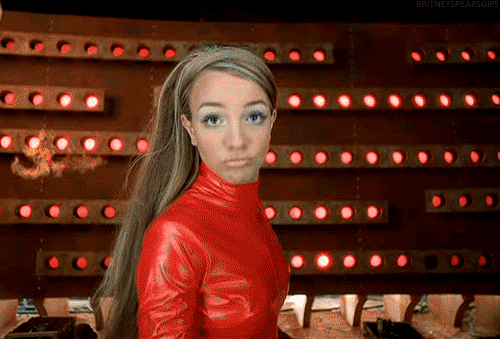
While men being “trash” is a reality, it’s not everyone’s reality and media has the power to influence the ways in which men act just as any gender socialization carried out by the family, religion and any other agents of socialization.
So why is it that the majority of the shows we’ve seen have our men beating their girlfriends or wives, stuck on the couch after being laid off but still “job searching” or as young men who could be characterized as promising, take the role as “upcoming” DJs trying to get discovered on the off chance that DJ Khaled is walking the streets of the Bronx one day?

Insecure (Season 2: 2017) on HBO - Issa talks to her laid-off boyfriend, Lawrence, about seeking employment.
(It’s important to note that her other boyfriend was, yep, you guessed it, an upcoming DJ. IN 2017!!!)
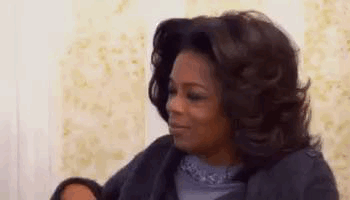
Are the only occupations that our male youth can seek out ones where they’re carrying a laptop and a thumb drive around for mediocre payment until Kanye West on his regular route through low end Miami strip clubs 🙃 happens to be at the club they’re playing at and demands to hear their poorly produced instrumentals then BAM!!!, they’re at the Grammy’s, walking on stage for Song of the Year? If we’re being realistic, it’s all fairytale. ✨
This writer is of the opinion that the representation of men like this increasingly perpetuates a cycle we know all too well and frankly, she’s tired of it.
If you think of the black romantic comedies recently released, pretty much anything with Morris Chestnut, Michael Ealy, Meagan Good or Regina Hall (because naturally, there aren’t any other talented black leads in Hollywood, ah haha)
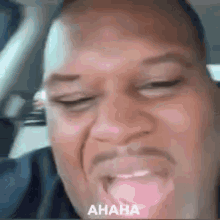
The women almost always have a chip on their shoulders and the men are always so cheesy in their pursuit of these women as if a good gentleman can’t be as confident and aloof as the bad ones. While I see the intention is to show that not all guys are the same, maybe if we stopped treating men who are good like phenomenons in our content, that persona would become a reality.
Additionally, the manner in which women are illustrated in the media has always had an impact in the way “real” women view themselves.

Beyoncé - Pretty Hurts (2014)
Verse 2
Blonder hair, flat chest
TV says bigger is better
South Beach, sugar free
Vogue says thinner is better.
As heard in Pretty Hurts by Yoncé, she discusses the various fads that women adopt to gain a more “desirable” body and the ways in which specifically TV and print media set an agenda on how the female body should look.
The agenda today is Bigger is Better as seen from the outbreak of the “IG Girls” and glorification of “thick” women in songs such as Big Sean’s “A$$”, Nicki Minaj’s “Anaconda” and Blac Youngsta’s “Booty” in 2011, 2014 and 2017, respectively. According to Whose Perspective, “When the media focus primarily on women’s physical attributes, women often feel pressured to live up to a social ideal,” and this is evident as soon as one opens their Instagram app. Women all over the globe have sought out “flat tummy tea”, waist trainers, diets and a plethora of surgeries to look like the women they see in the media who have normalized these fads.

Image showing Blac Chyna post-enhancement surgeries - The “Wisdom Tooth” Body Look
But there’s a conflict at times as even though bigger bodies have been glorified, a female artiste cannot appear in public with a little more weight on than is expected without being assumed to be with child.
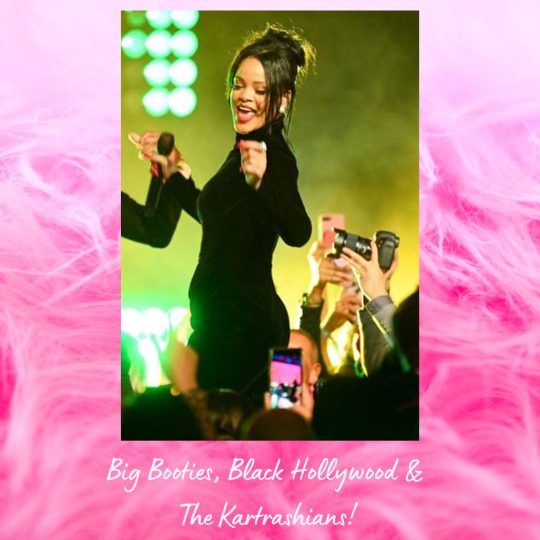
Image showing Rihanna, with a little more tummy than normal, performing at her annual Diamond Ball.
This is seen with images/videos released in these three instances :
Beyoncé - “OTR II” Tour 2018
Nicki Minaj - “Good Form” MTV EMAs 2018
Rihanna - “Lemon” Diamond Ball 2019
Women then begin to strive to be thinner and, therefore, “prettier” and end up spoiling their natural beauty or getting confused in the middle of it all as one minute the media glorifies one body type and another, the other type.
While it can be argued that the bad far outweigh the good, it’s important to look at both sides as if something was holistically negative, it would soon become obsolete hence, since it’s still existent, the media in its portrayal of gender must be doing something right!
Perhaps, today’s delineation of gender benefits the people carrying out this portrayal. There exists an agenda to change the way we depict women so we may say that misrepresentation and inequality gave birth to so many female roles being developed to level the playing field for men and women (and because everyone is striving to be politically correct in this social climate) for example, movies with female-led casts (Hustlers (2019), Ocean’s 8 (2018) Hidden Figures (2016), The Other Woman (2014) & The Help (2011) which ultimately beckons for more female role models to come to the forefront of the media.
Let’s also take the Kardashian’s, (not-so- affectionately called The KarTRASHians) for example. Yes, they’re sold in a particular light for increased viewership ie. women love drama, other people man and lavish lives, but they’re motivating women around the world to be Boss Babes, get their own money, tertiary education and not depend on a man underneath all that frivolity on TV.

Recently, a young woman, Samantha Gil, who is heavily inspired by Kylie Jenner, began a charity foundation called Nest of Love geared towards the empowerment and mentorship of women in her community. Samantha said her role model is Kylie because, “she’s a Boss Babe, she’s the ultimate businesswoman, she’s inspiring, honestly.”
youtube
Published on Sep 9, 2019
Kylie and Ellen, along with Kris Jenner, had a huge surprise for Samantha Gil, who founded a women's empowerment group called Nest of Love.
Therefore, beyond the fake bodies and flashy lifestyles, there are real people, living real lives being really inspired by the drive and initiative taken by even those who are considered the trashiest in media.
With the realities of the underrepresentation of positive male role models in the majority of African-American television productions and the depiction of the ideal body in TV and print media, there is much to be desired from gender representation from these entities and there is an urgent need for change. However, when we strip away all the bad, there is still a lot of good from how women are now being portrayed in the media as Bosses, go-getters and trailblazers. Thus, we must find ways to magnify that positivity. As Gender and Cultural Studies students, we are the ones who will soon occupy the rolls of the gatekeepers of media and ultimately assume control of these media houses. It’s ultimately up to us and the others around the world to pour as much positivity and accuracy into gender representation if we want to see substantial and meaningful change.
References
DeGeneres, E. [The Ellen Show]. (2019, September 9). Kylie and Kris Jenner Reward Inspiring Women with Huge Gifts [YouTube]. Retrieved from https://m.youtube.com/watch?v=oEr4fDL9xTQ.
Knowles-Carter, B. (2014). Pretty Hurts [Recorded by Beyoncé].
WMW-Jamaica (2010) Whose Perspective: Gender Analysis of Media Content, Kingston, Jamaica.
0 notes
Text
Gender Representation in the media
The mainstream media is undoubtedly one of the most influential platforms in the world today, as this is where individual perceptions are manipulated. Adversely, it is through this process that stereotypes come about. It can be argued that Mainstream Media and gender representation corresponds extensively, as the media plays a major role in the way men and women view themselves whether it be positively or negatively. In this case it affects them negatively as evidently the media Sexualizes, Dehumanizes and compares both genders.
In relation to the sexualization of the genders, this is evidently the reality for both males and females. However more so the females. The media overly exerts the human body in all the glories of its nudity. Media models are portrayed in less clothes and in an ultimately, sexually provocative manner. Women on the other hand are conveyed as sexual objects and possessions to men with little to no respect exerted on them. This is deemed as gender inequality. According to author Julia T Wood, Gender Inequality alludes to the social procedure by which individuals are dealt with contrastingly and disadvantageously, under comparable conditions, on the premise of sex. Woods in her article ‘Gendered Media’, state that in the media, Females are delineated as sex objects who are typically thin, youthful and subordinate. As a result of this women on a whole are undermined and mistreated by the society as this type of behavior is deemed acceptable in the mainstream media. Additionally, men are depicted to be overly sexual toward women as this is their purpose and this type of behavior is the norm. This can be seen currently in the media for instance in movies and in the fashion and advertising industry.
Both genders experience dehumanization however males undergo this phenomena on a larger scale, as they are depicted as almost non humans. They are deemed as emotionless, overly strong and resilient creatures that can contend and deal with any situation being strictly objective. Woods in her article ‘Gendered Media’, state that in the media, men are seen as dynamic, capable, sexually forceful and uninvolved in human connections." Due to this, men in the society are emotionally neglected and restrained as this type of behavior is viewed as weak and ‘Feminine’. As a result of this many of the men in today’s society undergo a series of depression and emotional neglect. This is evident in the way they function independently and the type of relationships they share with other people where they tend to be emotionally absent and uninvolved.
The media plays a major role in the comparison of the different genders deeming men as the stronger sex and women as the weak one. Males are depicted in the media ascending to their highest capability, with no limit to what they can achieve. Whereas, women on the other hand are limited. Men can be seen playing the managerial roles as CEO’s, doctors, lawyers and ultimately the bread winners while women play roles such as housewives, soccer moms, teachers and other basic positions. It is evident that the media tends to reiterate the traditional roles rather than focusing on the equality of both men and women (Gender Inequality). Often times when women accomplish certain positions that would predominantly be given to a man, the back story is rarely a hardworking and dedicated one. Instead, it is a degrading one that is suggestive that the woman had to be promiscuous in order to earn such accomplishments. As a result of this men in society resent women in authority and show them little to no respect on their accomplishments. This type of behavior is generally exerted from the wider public toward women in positions as it will always be believed that she did not work to be where she is instead she used to her body to get her there.

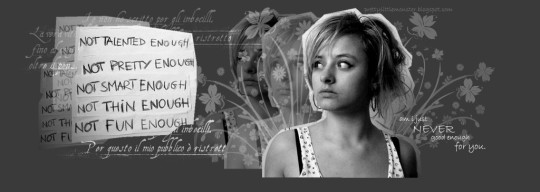
Sources
Wood, J. T. (1994). Gendered Media: The Influence of Media on Views of Gender. Retrieved October 28, 2017, from https://www.google.com.jm/url
Ross, K., & Byerly, C. M. (2004). Women and media: international perspectives. Malden: Blackwell
Jeanette Fray
620110159
0 notes
Text
Do gender representations and stereotypes in mainstream media benefit women and men, or are there changes that need to be made in the way gender is represented?
When you think of what your first idea of manhood or womanhood came from, what comes to mind? Perhaps your parents, and the ways in which they led by example- a shining reflection of what an ideal gendered human behaves like.
Of course, most of us do not have an inherent gendered lens, and we do not think that we are being molded in a gendered way- but think about the books you read growing up, or the toys you played with, the color of your clothes, and the kinds of movies and cartoons you watched. Byers and Dell assert that while sex differences are rooted in biology, how we come to understand and perform gender is based on culture. Gender speaks to those socially constructed rules, norms and expectations about the roles men and women play and how they are supposed to behave. The ideology of gender as performative speaks to the ways in which the roles are ‘acted out’ or ‘performed’ in daily existence.
It is undoubtable that mass media plays a large role in the gendered socialization we experience from very early. Brooks and Herbert believe that the media is crucial in the construction and dissemination of gender ideologies and, thus in gender socialization. The stereotypical depiction of the black woman as angry, welfare mothers, jezebels, etc... is postulated by Edwards (1993), to be the most persistent representation still used to date, coupled with a seemingly opposite representation that is centered around the oversexualization of the black body and a fetishization of a non-threatening ‘mammy’ like figure. But how does this affect how blackness is internalized by the black woman and the larger society?
The idea that is often internalized by many black women about how they are expected to behave can prove to be unrealistic and invalidating to their individual identities- the pressure to always be a ‘strong black woman’ and to be loud and outspoken but also sexually alluring, possess sexual prowess but also be submissive to a man is an archaic ideal that is rooted in a patriarchal dominant society but also borrows principles from white supremist ideals that sees both black men and women in a confining way; Black men are expected to be tough, sexually aggressive, or are victims of street crime and violence. Take for example, ‘She’s Gotta have it” by a black man- where the main character is self-described as a pansexual, polyamorous, sex positive black woman. Though the media is commendable for their portrayal of a multidimensional artist as a black woman, the character was depicted in a very messy oversexualized way. For a series that is being produced in 2017, to be glorifying oversexualization while trying to use artistic license as a guise is downright shameful. The same can be said for the stereotypical representations of black men in the well-known hit series ‘power’. The main character Jamie is the classic drug dealer gone corporate, cut throat, cheating but family type man. Making these depictions of gender mass produced and reaffirming them as the ideal standards of expressing is dangerous to the ways in which a plethora of people come to understand themselves in a gendered way through socialization.
The media can be commended for increased efforts into diversifying the way gender is represented and there is more visibility including gender non-conforming people and other people who exist outside of the binary. My suggestion as to how gender representations in mass media can be changed is to do proper research on the variations of people that you are trying to depict. It is just as dangerous to present a stereotype of a ‘diverse group’ than it is to continue to produce the stereotypes we already have. The social construction of gender is not as rigid as it is made out to be, and anything that has been constructed can similarly be deconstructed. The media has a great responsibility in fulfilling its role in the process of gender socialization and should try to ensure that the content that is being mass produced is doing more good than harm for the overall understanding of what it means to be a woman or a man (or neither or both!)
-Shania Daley (620090742)
“Gender, Race and Media Representation, Dwight E Brooks & Lisa P Hebert https://ourvle.mona.uwi.edu/pluginfile.php/373503/mod_resource/content/4/Gender%2C%20Race%20%20Media.pdf”
0 notes
Text
Are you who you are, or who you are expected to be? -Gabrielle Clarke 620118063
A basic understanding of who we are comes from simple things like our sex, our environment and the prescribed roles we are expected to play.
Sex according to the Collins Dictionary is the characteristic of being either male or female. Although often used interchangeably, sex and gender are very different concepts. Sex refers to ones biological makeup; ones reproductive organs. Gender however according to the Collins Dictionary is the state of being male or female in relation to the social and cultural roles that are considered appropriate for men and women.
These appropriate social and cultural roles are taught and passed down subconsciously throughout society. As seen below in an experiment conducted by the BBC in 2017 - “No more Boys and Girls”- adults gave babies toys deemed suitable based on their sex. When it was revealed to the participants that the sex of the baby was not as they had thought, they were quick to admit that subconsciously stereotypes had indeed played a part in their decision on what toys to give to the babies.
youtube
This experiment proves that adults have stereotypes embedded in their thoughts which influence their behaviours. What is clearly depicted in this experiment, is the manner in which adults reinforce gender stereotypes subliminally. This experiment’s main objective was to show how difficult it is to achieve gender equality when boys and girls are treated so differently from birth.
These stereotypes are garnered through the images portrayed by mainstream media. In media women are portrayed by how men see women (the 'male gaze'), or by how society expects women to look and behave. Most representations of women focus on their sexuality, emotions, relationship with children or their spouse.

On the other hand, men are portrayed as brave, strong and heroic in the face of danger. In Tough Guise: Violence, Media and the Crisis in Masculinity, Katz and Earp argue that while the media are not the cause of violent behaviour in men and boys, they do portray male violence as a normal expression of masculinity.
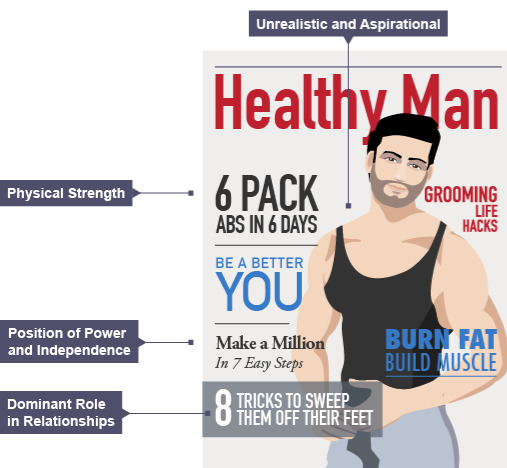
Do these stereotypical representations benefit men and women? The answer is no, they do not. These representations in mainstream media promote an “ideal image” of gender which allows persons who do not exhibit certain traits to feel as in they are not truly masculine or feminine. Changes are needed in order to create a society which is more tolerable of persons who are female but do not only exhibit traits deemed as feminine or vice versa.
In more modern society, stereotypical representations of men and women have been subverted but not nearly as much as is needed for a shift in the way society thinks and behaves.
An example of a deviation from normal and accepted stereotypes of women is seen in the movie The Hunger Games. In this movie the lead lady Katniss Everdeen (played by Jennifer Lawrence) challenges the stereotypical representations of women in mainstream media. She exhibits characteristics of athleticism, strength, courage, ability with weaponry (archery), and collected thinking; she does not allow her emotions to get in the way of her survival.
Another deviation of these stereotypes is seen in the show Big Bang Theory which combats male stereotypical behaviour. In this show, we are exposed to a group of scientist friends who do not show hypermasculinity. Hypermasculinity according to the Collins Dictionary is characterized by an exaggeration of traditionally masculine traits or behaviour. In this show, one of the scientists, Leonard, who is nerdy and geeky, still manages to get the girl, Penny, who is considered to be “out of his league”. Meaning not normally attracted to men who do not display “masculine traits”.
Although these shows have shown that we have come along way with media, more changes need to be made in the industry to combat these misrepresentations. Subconsciously, these representations have skewed our minds in to believing that to be male, one must display specific attributes and the same is true for being female. These misrepresentations in the media sadly have also caused us to shape our ideas of who we are. So if you really think about it are you who you are, or who you are expected to be?
Sources
Donald, P., et al. (2011). Gender and Media Content. Whose Perspective: A Guide to Gender-Aware Analysis of Media Content
Earp, J., and Jackson K. (1999) Tough Guise: Violence, Media & the Crisis in Masculinity (study guide). Media Education Foundation.
https://www.bbc.co.uk/bitesize/guides/zq6qsg8/revision/1
https://www.collinsdictionary.com/dictionary
0 notes
Text
Gender & media: Even though things change many remain the same? Ashley Crisp
“The media's the most powerful entity on earth. They have the power to make the innocent guilty and to make the guilty innocent, and that's power. Because they control the minds of the masses.” -Malcolm X
What is media? the main means of mass communication (broadcasting, publishing, and the Internet) regarded collectively.At birth we are assigned a sex with that comes gendered roles, in media these roles and their stereotypes are very profound one such platform is through television.
Women are represented in the media over the years as a sex symbol; 25% of women were partly nude in the top 100 films of 2017, and 9.6% of men were, therefore women were seen to more likely be naked in movies than men. In advertisements women were often in swimwear, nude or exposing excessive skin. In “whose perspective” the issue was raised about men also being exploited just as women requiring the showing of skin , however I believe the stereotypes in some way still exist as a woman is more likely to be labeled as a “whore” when naked comparing to a man, these therefore reinforces the belief that women are just for pleasure and are just for sex.
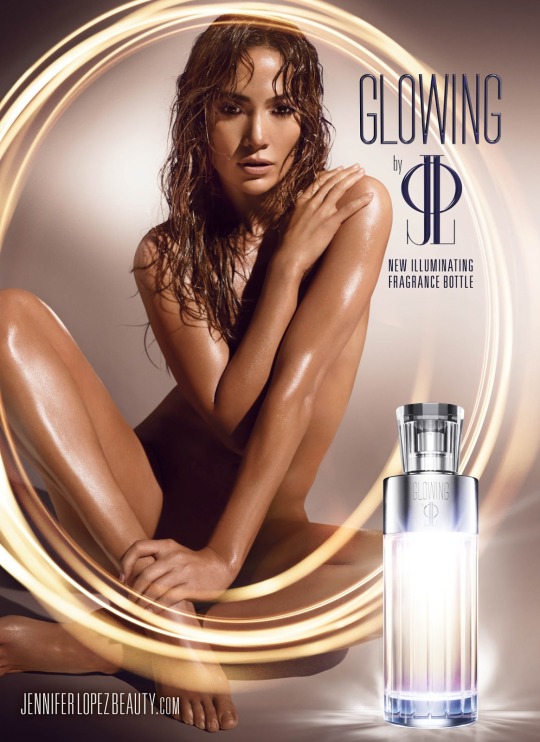
Overtime women representation on television have somewhat panned from the stereotype that their only “place” is in the home to being showcased as bosses, working class, confident and resilient through advertisements and movies such as “Hidden Figures” which showcased three brilliant African-American women at NASA -- Katherine Johnson, Dorothy Vaughan ��and Mary Jackson, they serve as the brains behind one of the greatest operations in history: the launch of astronaut John Glenn into orbit, a stunning achievement that restored the nation's confidence, turned around the Space Race and galvanized the world. This highlighted the fact that there are endless possibilities to what women are capable of and serves as a motivation for them to step out of the small space society tries to lock them in.
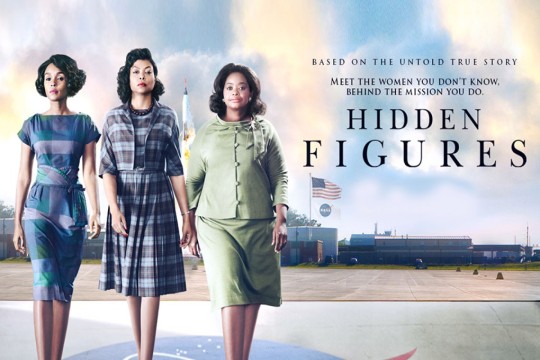
On the other hand men tend to deal with the pressure of constantly seeing on their televisions of living up to this idea of always being strong and “masculine”, with the ever so often photoshopped pictures of bulky bodies, six-packs and muscles. These set an unattainable standard for what they are to look like and how they are to behave, however shows such as “Daddy’s Daycare”, the plot follows two fathers who start a child day care out of the their home after they are laid off from their corporate jobs, this showed these men becoming stay-at-home dads, taking care of their kids, the home and touching emotional bases with their kids, which before was seen as a woman's role in the family.

According to “Who’s perspective” research shows that women are underrepresented in the news , men’s perspective are aired far more and that men are more likely to carry the Hard news such as wars, business and finances while women are more expected to carry soft news such as Arts and culture. This favors men by insinuating that women are less educated and less credible than men, therefore reinforcing the idea that men should do the “trivial” work while women say home and be housewives or do the less pressuring works in the work place.
The same can be seen in Print media such as books; women are often depicted as damsels in distress who are waiting to be rescued by a man or being bought into marriage, to have his child or to be his “mistress” in romance novels. While men tend to be seen as the rich heir, business man and tend to have a very dominant figure that ensures to make is presence and his power felt for example “Fifty-shade of Grey” and other novels.

0 notes
Text
Meagan Garcia - Media & Gender Stereotypes
Gender is a socially constructed concept which details the prescribed roles of both men and women as well as their place in the wider society. As such, the concept of gender is a fundamental aspect of the human identity, and by extension, the wider society. Society’s foundation rests on its social institutions which are the major tools used to shape and ensure its continuity. One such institution is mass or mainstream media – television, radio, newspapers, etc. – which persons generally regard as reliable sources of information. While the massive influence of mainstream media has its positive impacts, when we assess the gender representations and stereotypes which they perpetuate, there is some room for improvement.
To begin, the current gender representations circulated are also impacted by a racial lens which does not benefit all racial/ethnic groups. As stated by Brooks & Herbert (2006), “how individuals construct their social identities … is shaped by commodified texts produced by media”. This statement sheds further light on the reinforcement of gender stereotypes or prescribed roles and expectations of both men and women via mass media. However, even in the media’s representation of men and women, the issue of race/ethnicity plays an influential role in its impact on society. Resulting from the history of white dominance, there is evidence that mainstream media not only favours, but also benefits the white race more than people of colour (Blacks, Hispanic, Chinese, etc.). The “Central Park Five”, the case of five young African-American males who were accused of raping a white woman and subsequently incorrectly jailed due to racial profiling is example of the issue of race and gender stereotypes overlapping as a result of the stigmas perpetuated by the mass media. Furthermore, the language of the media when reporting these incidents more times than none incriminates the non-white individual while justifying the actions of the white party. Thus, based on the current application of the media’s racial and gender lens, there is much room for improvement as they do not favour nor benefit men and women of all races equally.

Secondly, the gender ideals pushed by the media benefit men and women only when they follow the prescribed norms. Women are traditionally expected to be quiet wives and homemakers while their male counterparts are painted as aggressive, sexually empowered providers who spearhead the household. Yet while these stereotypes were formed a millennium ago, the media still represents gender according to these ideals. This becomes problematic when men and women do not conform to these prescribed categories. For example, the current President of the Republic of Trinidad and Tobago Her Excellency Paula-Mae Weekes was forced to justify her sexual orientation rather than the media focus on her previous accomplishments prior to her inauguration. she was reduced to her sexual orientation as a result of her, a single unmarried woman, breaking down the barriers of traditional behaviours and expectations of a woman by assuming such a position. Often the media would rather talk about women’s private lives than their professional accomplishments when they sit in positions of authority. As such, it can be noted that mainstream media does not consistently benefit both genders.
Lastly, while the above points detail some faults in mainstream media’s representation of society’s gender ideals, the media can still be commended for slowly adjusting to society’s changes in acceptable norms and behaviours. Growth is a natural part of human identity; just as humans grow physically as time progresses, so does society. Although traditional stereotypes like the heterosexual “macho” male are still used as the ideal, within the last few generations formerly taboo behaviours and/or identities are slowly becoming acceptable norms. One such ideal is the LGBTQIA+ community. Gay marriage, transgender men and intellectual lesbians are in the process of becoming normalized by society, and by extension mainstream media. While hate crimes against this community exists, the media’s progression over the past few decades to accept, include and normalize formerly taboo versions of gender proves that they do benefit or support non-traditional gender representations of men and women.
0 notes
Text
Moves to make.. Main stream media in my opinion has made some changes in the gender construct of our society. Media it self has allowed views, ideas and new beliefs to be observed by more and more persons. This has cause for a more open and accepting society. Yet there are still some stereotypes that can never go away when it comes to gender and media. Our expectations about gender roles affect the way males and females relate to each other. Similarly, men and women often assume different traits based on gender expectations. As stated in whose perspective book states. Let’s get started with women. The world has definitely transformed in some type of way to how it looks, deals and view women over the years. Women have been the house mate, the sex partner or the lesser than to the male or man in the room. Now thanks to the working of the media we see women in a different light and they are seeing their selves in a new light as well. Now women are seen in more stronger roles in television and in the community, now they are portrayed as roles of being in charge and dominating the places they are associated. So even though there is a new positive change in the direction there is still lots of work to do to still change the image of ‘female’ in the media. There are certain things we decide a gender should be. Gender Ideology refers to a particular system of beliefs which accords male dominance over the values, processes, and decisions which define how society should be organized, how society should function and the roles of its members. This reminds me of the norms and values that have been passed down through the years to make population. They have been told to me ‘masculine’, strong, angry, violent, etc. The media these days especially when you turn to YouTube you see a change. More and more men/males have started to now seen in more feminine type of videos. Such as make up tutorials and outfit of the days. Now they feel free to be doing cooking channels and shopping adventures and other stuff. So there is definitely a change in this area thanks to media. So we still definitely still have moves to make Kari-Marie Downer 620112653
0 notes
Text
Contrast in Gender Representations- Shakira Subaran 620096148
As humans, we are incapable of having a lifetime experience without it being about gender. One’s gender, which is their socially ascribed qualities in regards to being man or woman, is one that dictates how persons are treated and spoken to, and about. This experience is constant, even throughout mainstream media platforms such as print media, television and radio that produce news.
In deconstructing gendered experiences broadly, there has to be an understanding of gender roles and general qualities given to both genders. Gender role is defined as “the overt expression of attitudes that indicate to others the degree of your maleness or femaleness.” Seeing that gender roles are socially constructed, they are stereotypical and my affect various areas. This includes personality differences in males and females, where men are aggressive and assertive, while women are emotional and passive, household responsibilities where men are the breadwinners and the handyman, while women cook and nurture the children, occupational choices, where men are more likely to become top executes and engineers, as opposed to a woman that is influenced to become nurses and teachers, and also in physique, where men are expected to be muscular with short hairstyles, while women are expected to be well groomed.
The qualities ascribed are deeply entrenched in society, and when there is deviation from the expectation of gender roles, the situation is treated in such a way that may project as hateful and discriminatory. An example of this would be Jamaica’s Lisa Hanna, former Minister of Youth and Culture, who, while acting in said capacity, a photo surfaced of her in a bikini at the beach. She received widespread backlash from authority figures and the general population for the picture, which was also seen as a news worthy item. While her attire was completely appropriate for the beach, the logic behind not wearing suits, jeans of any excessive amount of clothing in water due to greater risk of drowning was ignored, and her role, qualifications and intelligence were questioned. She was listed in some headlines firstly as former Miss World, a more feminine role, as opposed to her being a politician, which was downplayed as if her ambition and leadership qualities (more associated with men) were invalid. This can be cross referenced with traditional gender roles of women and men, which cannot mix, as when there is some form of backlash, the stereotypical understanding of being a woman will be highlighted, ignoring the other advances made.
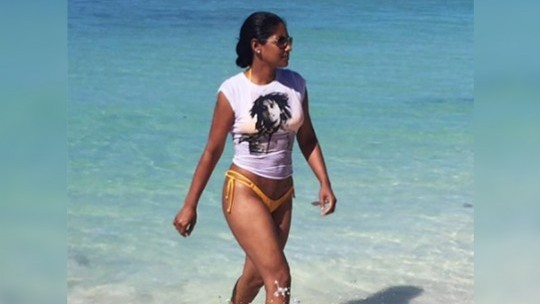
Additionally, as more internationally recognized example, back in February 2013, The Sun in Britain had a cover of recently murdered Reeva Steenkamp, who was killed by her boyfriend, Oscar Pistorius. The cover was a complete photograph of the victim in a bikini, which one could argue that it was to highlight that she was a model. However, the picture was completely inappropriate, especially in relation to the picture the situation. This was basically drawing attention from what happened, and hypersexualized a deceased woman. A columnist for the newspaper and feminist Suzanne Moore even described it as ‘lechery over a corpse.’ This was in contrast to Oscar Pistorius’s picture on the same cover which was very small and showed him in his professional capacity as an athlete, who was an Olympian and also a Paralympian due to being a double amputee. For both persons, other pictures could be used, but this highlights gender representations in the media. Women are more likely to be shown exposed and having a hypersexualized, flirtatious demeanor, as opposed to a man that had killed his girlfriend, lessening the impact of the act by appealing to hearts as him in his ‘heroic’ capacity as important due to his achievements, and disabled influential individual.

Adjustments need to be made in terms of media representations of both genders. There is a far way to go in showing that women are not less than men in any capacity. This can be done by showing men doing more traditionally female activities and females doing more traditionally masculine activities, which span across all areas such as occupation, behaviour, and personality. Women need to be allowed to make the impact that they deserve, without seeing them as a separate entity from men, with there being no dominant gender. The media needs not attached gender stereotypes to men and women, and allow them to be versions of themselves without having a gendered experience in every aspect of their lives.
Reference
gender role. (n.d.) WordNet 3.0, Farlex clipart collection. (2003-2008). Retrieved September 23 2019 from https://www.thefreedictionary.com/gender+role
0 notes
Text
Advertising Gender Roles and Stereotyping in the Media: Have things changed or are they still the same?
Ever since the late 19thand early 20thcenturies, the radio, television and daily newspapers we brought into our homes have provided us not only with information and entertainment but with something more sinister and similar to being brainwashed. The media has played a large role in creating our social norms because of how often we are now exposed to gender roles that warp our views of sex and sexuality leaving many with “unrealistic, stereotypical, and limited perceptions”.
According to Julia T. Wood (1994,p.31), these stereotypical roles commonly show women as underrepresented which falsely implies that men are the cultural standard and women are unimportant and invisible. Women are also portrayed in stereotypical ways as hypersexual beings with the main purpose of pleasing and depending on men. Depictions of the relationship between men and women emphasize traditional roles and violence against women.
Men, on the other hand, are portrayed as strong, independent, powerful, and sexually aggressive. Men are usually shown that hypermasculinity is what determines how manly you are. Have things changed or are they still the same in today's media?
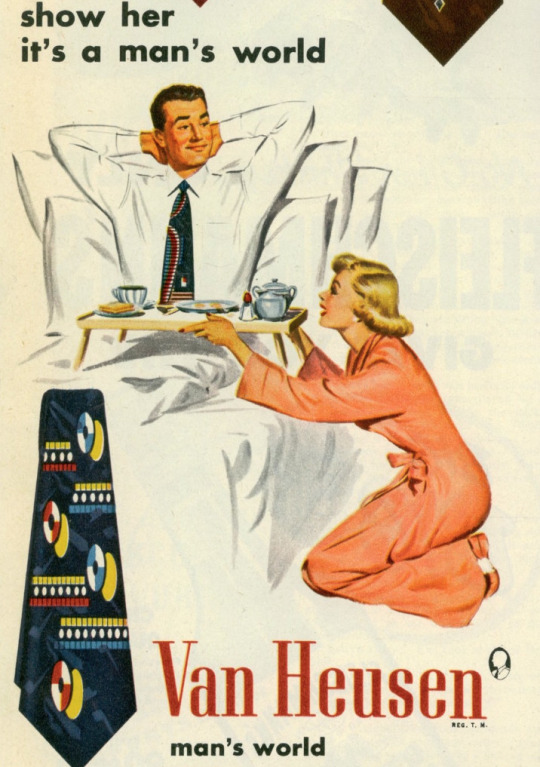
An ad made in the '50s for ties shows the traditional roles of men as powerful and women as submissive.
J.D Brown and K. Campbell (1986) noted that men are usually never seen doing housework or rarely shown caring for others. They are typically shown as uninterested in homemaking and child-care. When someone is shown taking care of a child it is usually the mother, not the father. This perpetuates a negative stereotype of men not being involved or caring about family. I have personally seen a change in this type of gender role being advertised to men. It has become more acceptable for a man (specifically a black man) to be seen engaged in parenting. The NCB advertisement in 2010 for Keycard shows what appears to be a single father taking care of his daughter. Now in today's society being a "man" means not only being successful professionally but successful in other aspects of life such as being a father that handles "business" and has emotions and would do household chores.

2010 NCB Christmas advertisement
However, this type of dynamic can sometimes get lost among the other advertisements we consume daily. The hypermasculine and over-sexualized female stereotypes are still shown to us, for example as seen in the popular Jamaican bedroom tonic Black Stallion advertisement.
vimeo
Women are still shown as ornamental objects whose primary function is to satisfy the sexual fantasies of men. The media has created two images of women, the good woman- these are the loyal wives, pretty, deferential, focused on home, family, caring for others and being subordinate to men. The bad woman- the media offers us the evil sister to the good homebody woman, she is a whore, a bitch, sexy and sexually aggressive, all the things a woman is not supposed to be. These opposites are often juxtaposed against each other to dramatize their differences (Wood, 1994).
This can be seen in the black stallion advertisements as the man imagines that his wife, the good woman is a much younger, sexy and erotic version of herself as she washes his car, the bad woman. Women get a glimpse of what the media wants them to believe is what men want. Our insecurities are preyed upon by marketers. Alcohol and bedroom/ energy drinks and tonics are marketed to men in a similar way diet supplements and body shapewear are marketed to women. They prey on their anxieties about their attractiveness. According to a study done in 2013 by Health Psychology, men use these products to regulate their masculinity ("If I consume this drink, I will perform better") and will be more likely to consume more if they feel as if their masculinity is being threatened.
A common theme is the portrayal of women as symbols of sex that are defined by their bodies and how men treat them. Sex sells and the consequence of this is one of the most damaging to how women and men view themselves and each other. The body becomes objectified and negative self-images are cultivated. Sex sells products and sexual, erotic images are the single most prominent characteristic of advertising (Muro, 1989).

Jamaica Tourist Board 1970’s Advertisement
Popular culture has commodified the black female body. The black body ideal of large breasts, a thin waist, and round buttocks according to Hooks (1994) is now being depicted with the Westernized beauty ideal of long straight hair, light skin, and blue or green eyes. Stereotypically portrayed as embodying a passionate, sensual eroticism, as well as subordinate feminine nature, the biracial woman has been and remains the standard other black females are measured against.
Therefore, as seen progressively over the years a societal change will bring about a change in the media. Gender roles are just roles, it is up to individuals to decide whether or not they are going to fill them.
Written by: Amaka Latibeaudiere (620106553)
References:
Wood, J. T. (1994).Gendered Media: The Influence of Media on Views of Gender. .North Carolina: Department of Communication, The University of North Carolina.
Munro, M. (1989, April 23). Comment: New era of eros in advertising. Morning Call.
Psychology, H. (2013). Energy Drinks Prey on Male Insecurities.New York.
Brown, J., Campbell, K., & Fisher, L. (1986). American adolescents and music videos: Why do they watch?
1 note
·
View note
Text
Change is Needed in How Media Promotes Gender Specific Behaviors- Racquel Garwood (620107906)
Media portrays and perpetuates gender-specific behaviors through their representation of males and females. This portrayal is gender-specific in that there is a representation of actions that are intended for only one sex. That is, a job that is intended for only males or females based on representation. This representation influences and affects our relationships, interactions and overall socialization. Although, they are often confused and related, the word sex and gender are not synonymous. Sex is biological and assigned at birth while gender is the values and cultural roles usually associated with each sex. There are many changes needed in the way media portrays and represent gender, gender roles and gender expectations.
Media can be defined as the outlets and tools used to transmit and share information with people. Gender stereotypes are transmitted through television, advertisement, music and many other forms of media. From the moment we are able to understand, there are specific roles and behaviors that are expected based on sex. Females are expected to be innocent and desirable while men should be brave and strong. The aspirations for females traditionally are expected to be marriage and motherhood. Whereas men are groomed to be the head of the household financially and authority wise. There are expectations associated with how we dress, speak and behave.
Firstly, our life goals as either male or female is portrayed through media in an unrealistic and stereotypical light. Little girls learn through countless princess movies that were made and are still being made that their happily ever after will be achieved through love from a handsome prince. It is expected that a female’s main goal should be to find a husband and become a mother, which these princess movies highlight by focusing on what they portray as romantic relationships. They also portray and idolize what is the deemed the perfect relationship, which conflicts with the reality of actual relationships. From a tender age, females are taught that this is the ultimate goal, “happily ever-after".
For males, the princes are viewed as handsome, wealthy and the hero of the story. Promoting the notion that masculinity is having to be the provider, the one that saves the day. These fairytales promote images that are misconstrued for both males and females as not all females grow up to marry or have children and not all males are the breadwinners for their families, which does not make them any less feminine or masculine. For example, in the fairy tale Cinderella. There have been many renditions of this classic that teaches girls that life does not get better until they meet a handsome prince to rescue them from an unpleasant lifestyle.
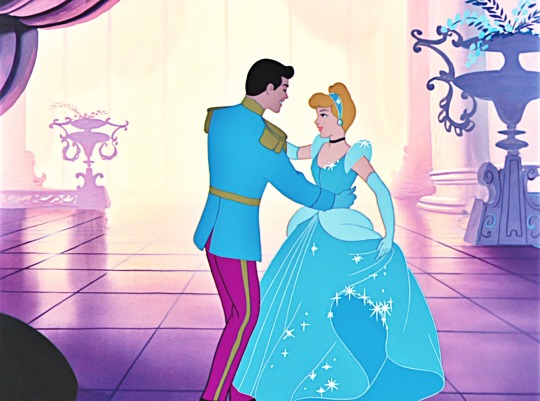
An image from Disney’s Cinderella (1950).
Secondly, the media influence the way we dress and what attire is considered masculine or feminine. A person's way of dress becomes an important marker for their gender identity. From the moment we are born gender roles are assigned through our attire. It is expected that a baby would be dressed in a specific color to identify whether they were male or female. Pink symbolizing that the child is a girl and blue being boy. These colors are then deemed feminine or masculine. Using attire to shape and understand another person’ gender identity is then embedded in our socialization. For example, when males wear clothing that are mostly portrayed by the media as attire for women there are connotations made about their sexuality and identity as a man. Whenever females dress in a manner that is considered more masculine, she is labelled as a tomboy and the same assumptions may be drawn about her sexuality and gender identity.
youtube
The song Tomboy by Destiny Rogers demonstrate many of these views.
Lastly, the most common stereotypical representation by the media that needs to change is the portrayal of qualities that are supposed to be associated with each gender. Females are expected to be submissive, desirable and soft-spoken, while men are expected to be rough, assertive, aggressive and more focused on sexual conquests. The media’s portrayal of femininity and masculinity becomes what is expected of the sexes. For example, boys are told countlessly to “be a man” or “men don’t cry”. When in reality, crying is a human quality that is a normal part of grief or sadness and is not associated with weakness or a specific gender.
Movies, television shows, music and even modern culture are a tremendous influence when it comes to gendered expectations of masculinity and femininity. Gatekeepers and media content creators should strive to be more careful with the messages that are being released. For example, women are highly underrepresented within the media which can be changed. The stereotypical connotations of men and women can be altered to reflect a more neutral and uplifting view. Changes are being made, for example with the release of Princesses in fairy tales such as Moana and Frozen where the stereotypical love story was not necessary to the plot of the story. However, there is much more work needed in how we view and represent the genders.
Reference:
Brooks, D. & Hébert, L. (2006). Gender, race, and media representation. The SAGE handbook of gender and communication (pp. 297-318). Thousand Oaks, CA: SAGE Publications, Inc. doi:10.4135/9781412976053.n16
Donald, P., et al. (2011). Gender and Media Content. Whose Perspective: A Guide to Gender-Aware Analysis of Media Content
Wood, JT. The influence of Media on views of Gender. Retrieved from https://www.nyu.edu/classes/jackson/causes.of.gender.inequality/Readings/Wood%20-%20Gendered%20Media%20-%2094.pdf
https://www.youtube.com/watch?v=BaOScwq_lZs
1 note
·
View note
Text
Ashley Gibbs- Media and Gender
https://www.youtube.com/watch?v=b1q5rXZskYkMedia includes all the information that is communicated to us everyday through channels such as television, billboards, music etc. Since we are exposed to media daily it has an impact on how we perceive many things including gender. Whether those perceptions benefit men and women is debatable......
Consider 2016 Cricket interview with Jamaican cricketer Chris Gayle. A female Australian reporter was interviewing Gayle about the match when he began making suggestive remarks towards her, ending with the statement “Don’t blush baby”. She seemed visibly displeased with his advancements.
People commented on the incident with many Caribbean people stating that the reporter had taken Gayle’s comments too seriously. However, very little spoke in the reporter's defense, who was merely trying to remain professional at her job.
This is a reflection of how we as members of a media-influenced society assign and perpetuate gender roles to men and women. Gender roles refer to the ways in which people are "expected to act, speak and conduct themselves based on our assigned sex" (Planned Parenthood, 2019).
Gender roles tend to vary in different cultures and societies. In the Caribbean the man is expected to be the macho, strong and assertive player or “gyalis” confidently "picking up" many attractive women. The woman is generally seen as the sweet and sexy object of desire and is to be receptive towards male advances. These are some of the narratives attached to each sex and indoctrinated into us by society and the media that informs it.
These gender roles are apparent in other more deliberate forms of media. Music videos such as Motto’s 2019 soca "One Woman" project this ideology. In the lyrics of the song Motto states that he desires to be involved with many women, playing into the gyalis narrative. The women in the video mindlessly dance around him in revealing clothing. Emphasis is placed on their backsides as they dance, a concept which is known as dismemberment which involves the reduction of women to merely their sexuality by focusing solely on sexually charged body parts.
Gender roles portrayed in media and otherwise give way to gender stereotypes (widely-held, simplified beliefs of what constitutes a man and a woman) which people carry into real life. As displayed in the Chris Gayle video this hurts women in that it minimizes their role to merely a sex object/symbol. Or conversely as homemakers and nurturers in another context.
This gives woman a harder time excelling and being taken seriously in areas outside of these roles (as career-women). Women may feel inadequate if they are unable to attain the role of being either a sought after sex object or nurturer. This can be summarised into the madonna-whore dichotomy which sees the idea that women are expected to either project the image of the respected virginal madonna or the vilified worldly whore.
North American Summer's Eve feminine wash ad illustrates the plight men when faced with gender stereotypes. In the ad a wife informs her husband that he has been bathing with a wash specifically formulated for women. Thereafter the husband proceeds to engage in a series of activities that we normally associate with men ie. Doing yard word, engaging in extreme physical activities that require strength in order to restore his ‘manhood’.
Although the ad is meant to be humorous it is telling of the struggles of modern men when dealing with gendered expectations. Men and boys too feel inadequate when they fail to live up to their expected role in society (as strong, independent and assertive). Anything that is remotely feminine (e.g cooking or nurturing) cancels out their value as men. As such men are expected to project this toxic machismo at all times and are ridiculed if they can not uphold this tiresome expectation.
Some media exists which reverses these gender roles and with time it is becoming more popular. However, we are still a long way from erasing these deep-seeded ideas about gender from our societies, especially in Caribbean media. The truth is, influential messages about gender that the media puts out there only benefit those who fit the bill of what we perceive to be man and woman. Any one who deviates from these roles are thus placed into an "other" box which alienates them from the rest of their communities.
Sources used:
https://sites.psu.edu/aspsy/2015/10/03/madonna-whore-complex/
https://www.plannedparenthood.org/learn/sexual-orientation-gender/gender-gender-identity/what-are-gender-roles-and-stereotypes
Woman's Media Watch-Jamaica. (2011). *Whose perspective?: A guide to gender-aware analysis of media content. Kingston, Jamaica: Woman's Media Watch Jamaica
youtube
youtube
youtube
0 notes
Text
I am more- Shamique Peterkin 620109532
The meanings and values we associate with femininity and masculinity or being womanly or manly is referred to as Gender (Whose Perspective? 2011). Gender has been one term that has sparked many controversies in our society over time. There are certain roles, behaviors or expectations that we associate with being a girl or a boy. Each gender is expected to behave a certain way, think a certain way and view the world through certain lens. The media outlets have allowed for the continuation of reinforcing these required behaviors for each gender. The media stands as one of the largest and most influential agent of socialization for our children. There are certain stereotypes; a widely held but fixed and oversimplified image or idea of a person or thing (Oxford Dictionary 1800), that the media outlets continue to drill into the minds of its content consumers. These stereotypes tend to negatively impact the gender it is illustrating.
Our children from early as Primary School are being thought how they should act and what they should expect from the opposite gender. These textbooks tend to portray females in a stereotypical manner. We see when describing a female, she is always seen as emotional, easily manipulated and nurturing (UNESDOC 2007). In most of the textbooks in school we see females are always illustrated as the housekeepers and mothers, as though those are the only roles she can or is supposed to assume. These types of stereotypes are limiting our children’s’ minds and potential. We aren’t portraying our females a strong, independent and powerful women. In non-academic books the females rarely assume the position of lead character however when she does, she is illustrated as being family oriented, sexually promiscuous or cannot find a husband because she is an independent woman.
youtube
youtube
Sexual exploration of women especially on Television is very common. We tend to hyper sexualize our women and place their importance based on their physical appearance. They are portrayed as sexual objects to be gratified by men. It is an unrealistic expectation which allows our girls to have low self-esteem because they can’t achieve the clear skin, and hourglass figure that the media tells them they are supposed to have to be desired by a man. These portrayals of women create a fantasy that men believe everyday women are to live up to. The popular designer body is a clear representation of what the supposedly “perfect” figure bodies are displayed.
youtube
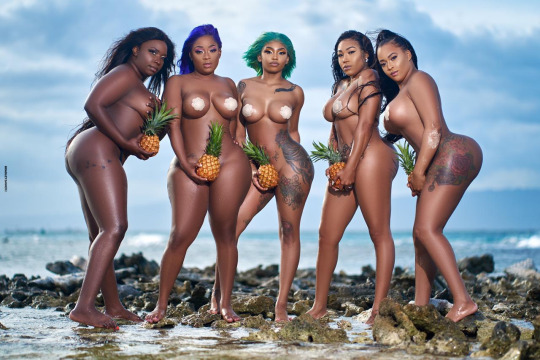
So, no matter what a woman achieves within her lifetime her appearance is the deciding factor on her worth. The term “sex sells” is one in which many advertisers use when they show women in provocative positions. In many advertisements our ladies are always half dressed or only the butts, breast and vaginal area are being highlighted.
youtube
These misrepresentations of our women have got to change. They are a form of keeping us in check and subtly reminding us what is expected of us. We need more books and movies that show our women as something other than a wife, mother or/and a housekeeper. Not only do these contents teaches our girls what they should aspire to be and look like but also it shows our boys what to expect from our girls. We do this and do not even realize we are also creating a unhealthy atmosphere for our boys cause they become sexually promiscuous and think their role is to sexually dominate a women and it is always what he wants and when he wants it. Which is why they become abusive to women cause what they expect is not always what is shown.
Reference:
Blumber, R. L. (2007). Gender bias in textbooks: a hidden obstacle on the road to gender equality in education . UNESDOC. Retrieved from https://unesdoc.unesco.org/ark:/48223/pf0000155509
Brooks, D. & Hébert, L. (2006). Gender, race, and media representation. In B. J. Dow & J. T. Wood The SAGE handbook of gender and communication (pp. 297-318). Thousand Oaks, CA: SAGE Publications, Inc. doi:10.4135/9781412976053.n16
Swift, J., & Gould, H. (2019). Not An Object: On Sexualization and Exploitation of Women and Girls. UNICEF USA. Retrieved from https://www.unicefusa.org/stories/not-object-sexualization-and-exploitation-women-and-girls/30366
WMW-Jamaica (2010) Whose Perspective: Gender Analysis of Media Content, Kingston, Jamaica
0 notes
Text
Are You Man Enough? -by Robert Rhooms 620087623
The controversy of gender representations and stereotypes is one that has plagued the media for centuries and could possibly be traced back to the first piece produced by a media outlet. Whether print, broadcast or internet media, the issue of gender stereotypes and representations can be viewed as difficult to deal with, and how it might benefit women and men, or how one may propose changes to be made if seen, is also similarly difficult to identify. In this post, my aim, like many authors and scholars, is to highlight the distinctions that exist within the media itself in how gender stereotypes and representations are portrayed. A stereotype is a view or a characterization of a person or a group of persons based upon narrow and frequently incorrect assumptions. Stereotypes are generally used by people who choose not to take the time to realize or examine what a person or group of persons is really like.
Whose Perspectives discusses that the media are responsible for “selecting, constructing and representing perceived realities - while obscuring others”. I am of the belief that mainstream media pushes the "hegemonic masculinity" agenda. When you turn on your television, there is about a 90% chance that the first person you see will be male. Yet, although men predominate on TV, questions come up frequently about the types of men portrayed and how they actually relate to the men we know in our daily lives. From an extremely tender age, boys learn what it means to be a man. Certain behaviours are not encouraged and some parents, especially fathers, will say to their sons when they have fallen or are hurt, "Wah you a cry for? You a girl?" These are the very ideas about approved behaviours and modes of thought are focused and supported by media messages. Men are to be brave, adventurous, think rationally, provide for their families, and these are all seen as "manly" traits and are highly encouraged. For instance, the movie "The Wolf of Wall Street", shows an all-male brokerage firm where the men made huge fortunes and became wealthy. They participated in a hedonistic brew of sex, drugs and thrills, and these were the features and characteristics that made them "men". The lifestyle they lived and the way the media portrayed what it means to be a man can actually be said to work against men as opposed to for their benefit.
youtube
At the same time, males are discouraged from pursuing many positive traits that are perceived as "unmanly". As stated before, these would include the ability to feel a range of emotions, including fear and hurt or sadness. Even talking about these feelings is considered unmanly. Very often it seems clear that the media's portrayal differs a lot from reality as primarily, they are less real, more perfect and more predictable. In other words, they are stereotyped. The need to be in control and also to resolve conflict using violence is something that the media encourages as a "manly" trait.
Essentially, all groups of people suffer from stereotyping and men are no exception. Stereotypes are powerful because they affect our expectations of what men should and should not be. They are damaging because they narrow our concepts of what men can be and do. They affect women's expectations of men in relationships and men's expectations of other men in work settings or in friendships. Media stereotypes have extra impact because they create images based on these assumptions, helping to shape men's own views about how they should act and how successful they are as men. The media should aim to have its audience not be intimidated by men, but rather relate to men as human beings and sources of inspiration and mediums through which the boys of today will learn what it really means to be the men of tomorrow.
youtube
In this ad campaign by Gillette, they seek to break the stereotype and representations made by other media users to let men know that it is still "manly" to have and express sensitive feelings and emotions, ask for help, not react with violence, have harmonious relationships and non-sexual relations with women. I believe that we should therefore not focus on whether mainstream media benefits men and women in general, but rather they should be mindful of what they are putting forward to the public as it affects everybody in the long run.
References
Brooks, D. & Hébert, L. (2006). Gender, race, and media representation. In B. J. Dow & J. T. Wood The SAGE handbook of gender and communication (pp. 297-318). Thousand Oaks, CA: SAGE Publications, Inc. doi:10.4135/9781412976053.n16
Donald, P., et al. (2011). Gender and Media Content. Whose Perspective: A Guide to Gender-Aware Analysis of Media Content
Paramount Pictures. (2013). The Wolf of Wall Street [Image]. Retrieved from https://www.youtube.com/watch?v=iszwuX1AK6A
Gillette. (2019). We Believe: The Best Men Can Be [Image]. Retrieved from https://www.youtube.com/watch?v=koPmuEyP3a0
0 notes
Text
Tico Phillips - ID # 620091551
When it comes to gender representations and stereotypes in mainstream media, it’s difficult to contend with how it might benefit women and men - or even to reconcile with the various changes needed in the way gender is represented - without first recognizing the many nuances which exist within media itself and outside of it. Let me begin by saying that this is a really complicated, contentious issue. Entire books, lengthy ones at that, have been devoted to media and its impact. Nonetheless, I will try my best to unpack a few points. First of all, because “mainstream media” encompasses such a wide variety of platforms and products, it is difficult to address these kinds of issues directly without first breaking down this term more thoroughly. Broadly speaking there is print and broadcast, whether it be music, film, television, books, news and the internet to name a few. Any one of these would merit its own deep dive into the topic of representation of women and men.
In my opinion, mainstream media (at least in its current state) is by design and definition hegemonic. It both reflects and projects normative values - it may challenge those norms but ultimately cannot pose a fundamental threat to them. Representations of men and women in mainstream media may be progressive, even transgressive, but only to a certain point. The limits of mainstream media to “accurately” represent anyone or anything is a perennial argument for the importance of independent media. For instance, the other day, I recently watched the 2019 movie Hustlers, whose plot mainly consists of a group of female strippers who conspire to rob wealthy Wall Street men.
youtube
While on the surface this narrative does sound transgressive (take for instance, the idea of the film itself being exclusively female led - by a diverse case of women of colour no less - or the premise of disenfranchised sex workers taking control of their lives and exercising autonomy using their wits - instead of their bodies - to get ahead), one cannot forget that the whole ‘point’ of the movie is heavily reliant upon its conformity to and position within outdated tropes of women primarily as sex objects and men primarily as financial providers. Even if it seeks to represent an experience that is for the most part ‘inspired by a true story’, its presentation is, for lack of a better term, tired.
Mind you, I thoroughly enjoyed the film - and I would recommend everyone go see it whenever they get the chance - but what with its thematic focus on sex, materialism, vanity and greed (especially through a gendered lens), it quite frankly doesn’t tell us the viewers anything we don’t already know (or haven’t already seen) time and time again about male/female power dynamics. In fact, the closing line of the film was particularly poignant. One of the main female leads, Ramona retorts, “The whole country is a strip club. You have people tossing the money and people doing the dance.” With that being said, men (particularly the ones behind the scenes ‘pulling the strings’ as it were) are almost always tossing the money in their funding of these projects and women (particularly the ones on the world stage) are almost always ‘doing the dance’, struggling to keep up - especially if job prospects and opportunities are limited.
Representation matters, no doubt. It’s just that I think that the politicalization of representation is an intentional capitalistic strategy by these powers that be (i.e. the bigwigs). Media is a consumable good, that goes without saying. It can also be used as a tool to distract. In fact, Brooks and Hebert argue that “much of what comes to pass as ‘important’ (or not important) is based often on the stories produced and disseminated by media institutions.” For instance, getting politically unaware people to dialogue about representation in media is a way to get them to interact with media, and at the same, preempt actual political work. People may know for instance the names of all of Kim Kardashian’s children, but ask them to name the elected members of parliament from the House of Representatives and they blank out. They may know precisely how many females/blacks/LGBT identified individuals are on their favorite TV shows but not on their city planning or school boards. Why is this? As discussed in section 1 of Whose Perspectives, the gatekeepers of the media are for the most part, responsible for “selecting, constructing and representing perceived realities - while obscuring others”, mostly for their own gain, financial or otherwise. After all, there’s nothing more dangerous than an educated public, so if they (the public) are kept ignorant (and pacified), they (the elite) can continue to push their agendas and continue to line their pockets, because they know that the public will ‘buy’ whatever they sell - literally and figuratively speaking.
Mind you, to say that media’s influence is purely negative would be negligent at best. I think that while there are definite drawbacks, there are also definite benefits. For instance, seeing people who look, act, or represent themselves the same as you can be comforting if you struggle with a sense of belonging or feeling alone or alienated from your peers. Consequently, as a society we're seeing a lot more diversity now, especially on television, and that's really exciting, especially since media tends to mimic and mirror society itself. Take for instance the critically acclaimed TV series ‘Pose’ on FX which explores how race, class, sexuality and gender intersect within the lives of the queer, trans and gender non-conforming participants of the underground ballroom scene in New York City. It should be noted that this is the first ever show in history with the largest cast of transgender actors (and characters).
youtube
If someone had no prior concept of the struggles faced by these minority groups, just engaging with the show might influence how they treat and interact with the oppressed and disenfranchised in their own neighborhoods, inadvertently teaching them compassion and tolerance which may (hopefully) result in them advocating for equitable legislation that benefits everyone - inclusive of people from all walks of life. Thus, when it comes to gender representations and stereotypes in mainstream media, perhaps we should not contend with how it benefits (or does not benefit) men and women across all walks of life, but rather the various responsibilities that we have as individuals (and as a collective) to create content not with the intent to sell or make a profit (as the gatekeepers are prone to doing), but rather to advance civilization forward in meaningful ways.
References
Brooks, D. & Hébert, L. (2006). Gender, race, and media representation. In B. J. Dow & J. T. Wood The SAGE handbook of gender and communication (pp. 297-318). Thousand Oaks, CA: SAGE Publications, Inc. doi:10.4135/9781412976053.n16
Donald, P., et al. (2011). Gender and Media Content. Whose Perspective: A Guide to Gender-Aware Analysis of Media Content
Ryan Murphy Productions (2019). Pose (FX) Trailer HD - Evan Peters, Kate Mara series. [image] Available at: https://www.youtube.com/watch?v=_t4YuPXdLZw [Accessed 16 Sep. 2019].
STXfilms (2019). Hustlers Trailer #1 (2019) | Movieclips Trailers. [image] Available at: https://www.youtube.com/watch?v=LUG2U-IxPx0 [Accessed 17 Sep. 2019].
0 notes